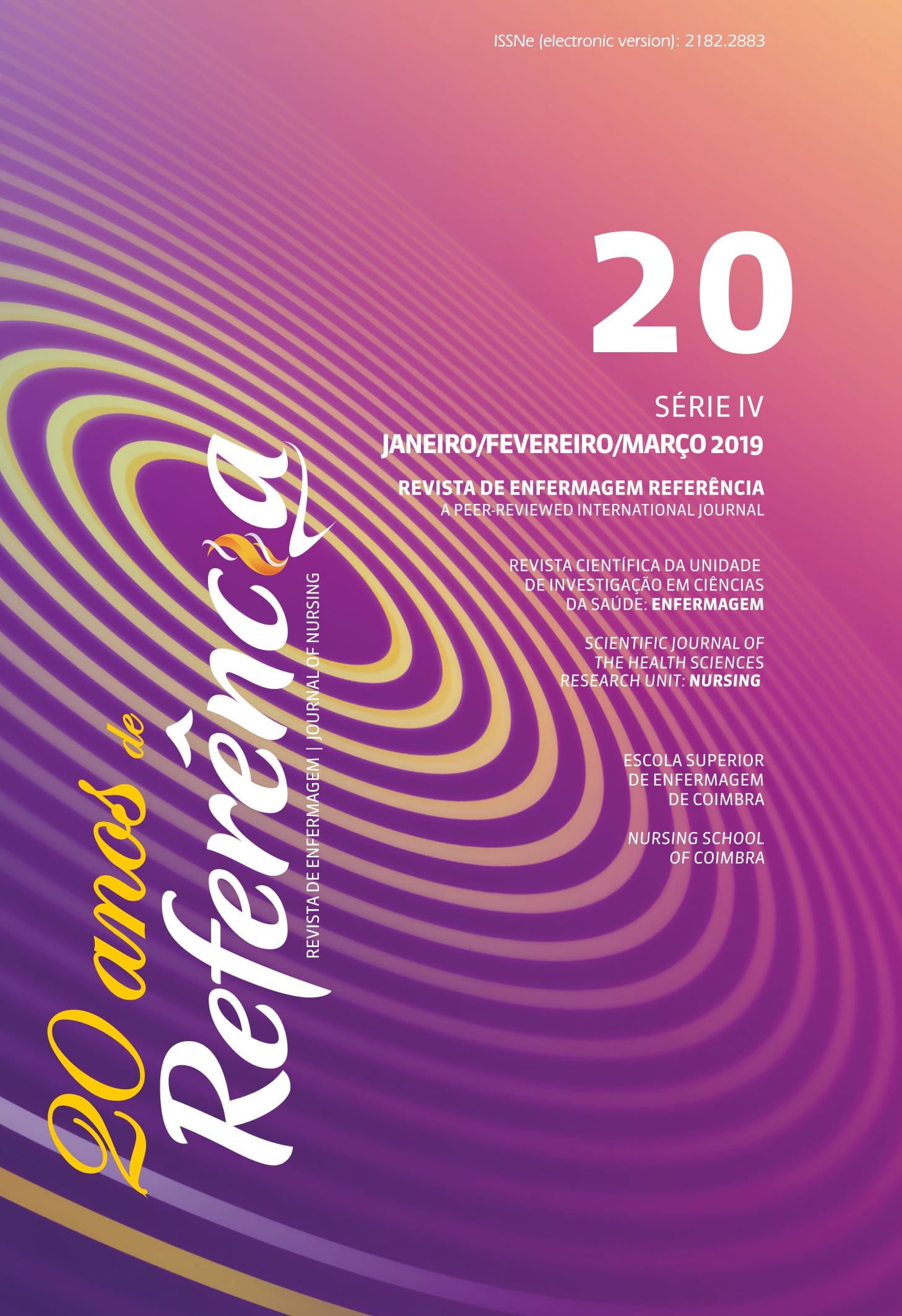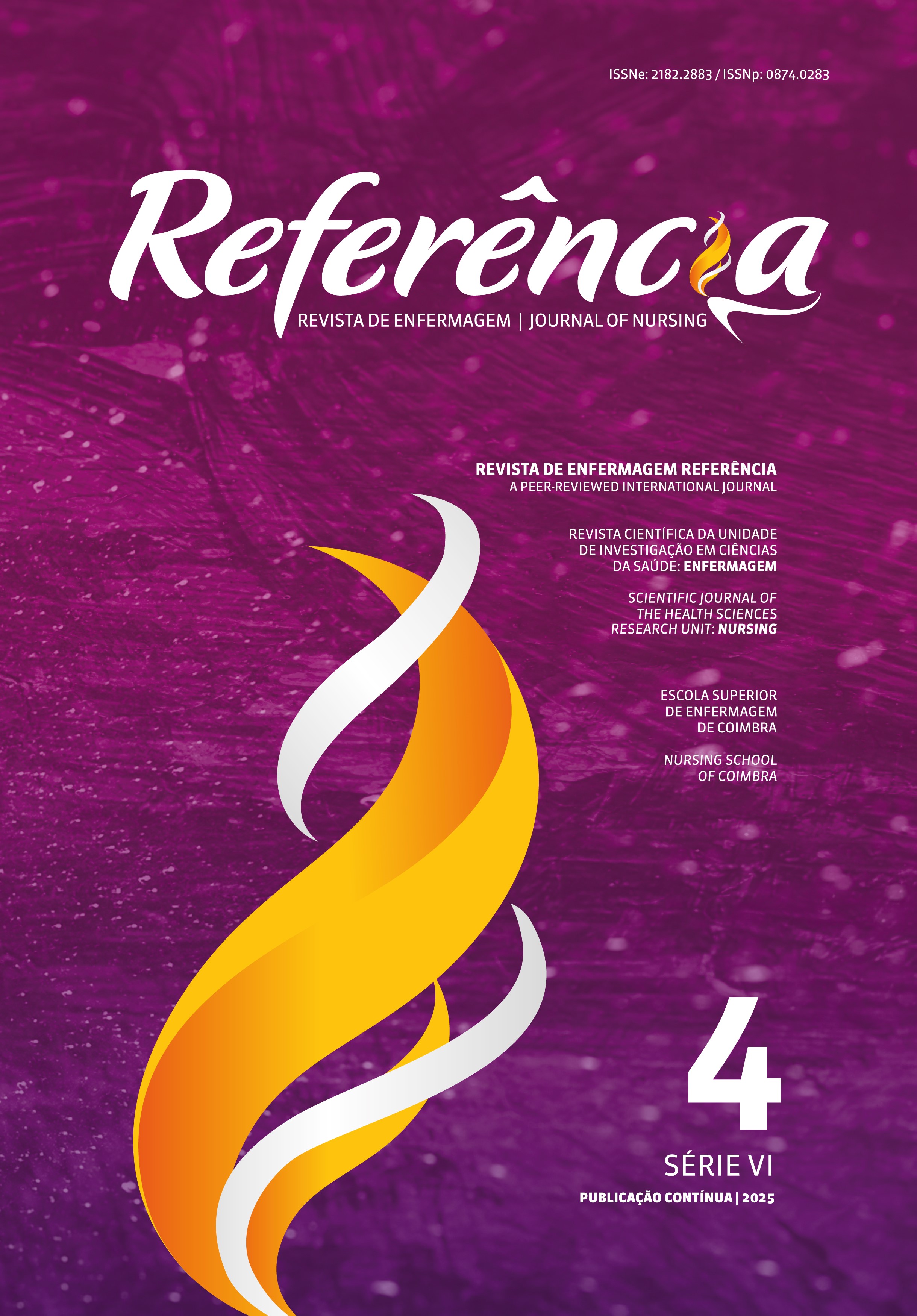Childhood Asthma Control Test: a study of the psychometric properties
DOI:
https://doi.org/10.12707/RIV19001Keywords:
asthma, child, caregivers, evaluation of symptoms, validation studiesAbstract
Background: The international guidelines recognize that the treatment of asthma focuses both on the current control and the risk of exacerbations, based on the management of symptoms which advocate an objective assessment. The Childhood Asthma Control Test (c-ACT) tool allows an assessment of the control of asthma in children and is used in Portugal, but has no validation.
Objective: To evaluate the psychometric properties of the c-ACT tool for the Portuguese population.
Methodology: A methodological, quantitative, and transversal study, on a sample of 60 children and healthcare providers, for the analysis of the psychometric properties of a measuring tool, written in Portuguese. The internal consistency was evaluated by Cronbach’s alpha, and the factorial validity and reliability of the model were analyzed using exploratory factorial analysis.
Results: The tool showed internal consistency, with a Cronbach alpha of 0.716. There are statistically significant correlations between each item and the overall evaluation.
Conclusion: The c-ACT tool demonstrated good psychometric properties, giving validity and reliability for use in the Portuguese population.
Downloads
References
Alzahrani, Y. A., & Ellen A Becker. (2016). Asthma control assessment tools. Respiratory Care, 61(1), 106–116. http://doi.org/10.4187/respcare.04341
Cano-De La Cuerda, R., Useros-Olmo, A. I., & Muñoz- Hellín, E. (2010). Effectiveness of therapeutic education and respiratory rehabilitation programs for the patient with asthma. Archivos de Bronconeumología, 46(11), 600–606. http://doi.org/10.1016/j.arbres.2010.07.003
Daniel, F., Silva, A. G. da, & Ferreira, P. L. (2015). Contributo para a discussão da avaliação da fiabilidade de um instrumento de medição. Revista de Enfermagem Referência, 4(7), 129–137. doi: http://doi.org/10.12707/riv15003
Direção-Geral da Saúde. (2014a). Doenças Respiratórias em números – 2014 Programa Nacional para as Doenças Respiratórias.
Direção-Geral da Saúde. (2014b). Programa Nacional para as Doenças Respiratórias - Manual para abordagem da sibilância e asma em idade pediátrica. Direção-Geral da Saúde.
Everhart, R. S., Miller, S., Leibach, G. G., Dahl, A. L., & Koinis-Mitchell, D. (2018). Caregiver asthma in urban families: Implications for school absenteeism. Journal of School Nursing, 34(2), 108–113. doi: http://doi.org/10.1177/1059840516689326
Global Initiative for Asthma. (2018). Global Strategy for Asthma Management and Prevention. doi: http://doi.org/10.1183/09031936.00138707
Hamawandi, A. M. H., Ali, K. M., & Naji, A. Z. (2016). Assessment of Asthma Control and Severity among Children According to Global Initiative for Asthma Guidelines in Sulaimani City-Iraq. European Scientific Journal, 12(3), 160–170. doi: http://doi.org/10.19044/esj.2016.v12n3p160
Koster, E. S., Raaijmakers, J. A. M., Vijverberg, S. J. H., Koenderman, L., Postma, D. S., Koppelman, G. H., … Maitland-van der Zee, A. H. (2011). Limited agreement between current and long-term asthma control in children: The PACMAN cohort study. Pediatric Allergy and Immunology, 22(8), 776–783. doi: http://doi.org/10.1111/j.1399-3038.2011.01188.x
Liu, A. H., Zeiger, R. S., Sorkness, C. A., Ostrom, N. K., Chipps, B. E., Rosa, K., … McDonald, J. (2010). The Childhood Asthma Control Test*: Retrospective determination and clinical validation of a cut point to identify children with very poorly controlled asthma. Journal of Allergy and Clinical Immunology, 126(2), 267–273.e1. doi: http://doi.org/10.1016/j.jaci.2010.05.031
Liu, A. H., Zeiger, R., Sorkness, C., Mahr, T., Ostrom, N., Burgess, S., … Manjunath, R. (2007). Development and cross-sectional validation of the Childhood Asthma Control Test. Journal of Allergy and Clinical Immunology, 119(4), 817–825. doi: http://doi.org/10.1016/j.jaci.2006.12.662
Loureiro, L. M. de J., & Gameiro, M. G. H. (2011). Interpretação crítica dos resultados estatísticos: Para lá da significância estatística. Revista de Enfermagem Referência, 3(3), 151–162. doi: http://doi. org/10.12707/RIII1009
Marôco, J. (2014). Análise Estatística com o SPSS Sattistics (6ª ed.). Pêro Pinheiro, Portugal: ReportNumber.
National Asthma Education and Prevention Program. (2007). Guidelines for the Diagnosis and Management of Asthma.
Observatório Nacional das Doenças Respiratórias. (2015). 10o Relatório panorama das doenças respiratórias emPortugal: Caminhos para o futuro.
Sais, C., Martinez, E., Lopes, H., Completo, J., Delgado, M., & Casas, M. (2013). Ambulatory Care Sensitive Conditions: Impacte do internamento dos doentes crónicos no SNS. IASIST, Dezembro, 41.
Sasaki, M., Yoshida, K., Adachi, Y., Furukawa, M., Itazawa, T., Odajima, H., … Akasawa, A. (2015). Factors associated with asthma control in children: findings from a national Web-based survey. Pediatric Allergy and Immunology, 33(10), 804–809. doi: http://doi.org/10.1111/pai.12316
Wood, B. L., Miller, B. D., & Lehman, H. K. (2015). Review of family relational stress and pediatric asthma: The value of biopsychosocial systemic models. Family Process, 54(2), 376–389. doi: http://doi.org/10.1111/famp.12139
Wu, A. C., Tantisira, K., Li, N., Schuemann, B., Weiss, S. T., & Fuhlbrigge, A. L. (2011). Predictors of symptoms are different from predictors of severe exacerbations from asthma in children. Chest, 140(1), 100–107. doi: http://doi.org/10.1378/chest.10-2794
Yawn, B. P., Brenneman, S. K., Allen-Ramey, F. C., Cabana, M. D., & Markson, L. E. (2006). Assessment of asthma severity and asthma control in children. Pediatrics, 118(1), 322–329. doi: http://doi.org/10.1542/peds.2005-2576






















